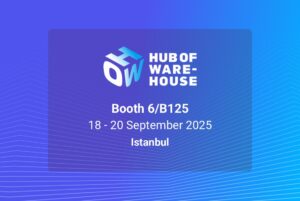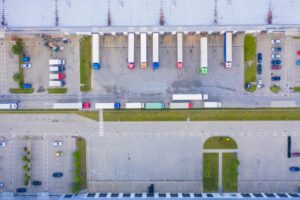US hospitals and health systems are facing unprecedented challenges. Staffing shortages, rising labor costs, and inflationary pressures are forcing leaders to operate under tighter budgets: all while patient safety expectations remain high. According to Gartner, even when healthcare IT budgets increase, they rarely keep up with the cost of delivering care, making it critical to protect investments in technologies that directly improve patient safety, staff efficiency, and regulatory compliance.
For CIOs, COOs, and clinical leaders, one solution stands out as both cost-effective and high-impact: Real-Time Location Systems (RTLS) for healthcare.
The Cost-Cutting Dilemma in US Hospitals
In US healthcare, budget cuts are never just numbers on a spreadsheet. Delaying upgrades, reducing IT support hours, or eliminating safety projects can have real-world consequences, from slower emergency responses to missed alerts that compromise patient safety.
Hospitals must also meet strict CMS (Centers for Medicare & Medicaid Services) and Joint Commission standards for safety, security, and operational performance. Cutting back on technologies that support compliance can result in citations, reduced reimbursements, or loss of accreditation.
This is why US healthcare leaders are increasingly prioritizing hospital RTLS solutions: systems that protect live operations, improve care delivery, and optimize workflows.
How RTLS Benefits US Healthcare Providers
A healthcare RTLS system delivers real-time visibility into the location and status of patients, staff, and equipment. In a US hospital setting, this can transform both safety and efficiency.
Key RTLS applications in US hospitals include:
Staff Duress & Workplace Violence Prevention: Workplace violence is rising in US healthcare facilities. An RTLS staff duress system allows staff to send instant alerts with precise location data, ensuring rapid security response.
Infant Security in Maternity Wards: Protect newborns with tamper-proof RTLS tags, location tracking, and access-controlled zones to prevent abduction and mismatches, meeting, and exceeding, Joint Commission safety requirements.
Asset Tracking for Medical Equipment: Reduce time wasted searching for critical devices like infusion pumps, ventilators, or wheelchairs. RTLS asset tracking improves equipment utilization and prevents costly over-purchasing.
Patient Flow Optimization: Track patient movement from ER to discharge to reduce overcrowding, minimize wait times, and increase throughput, improving HCAHPS scores and operational efficiency.
Regulatory Compliance Support: Use RTLS data to provide audit trails for CMS and Joint Commission inspections, ensuring you maintain accreditation and maximize reimbursement.
Addressing Clinician Burnout with RTLS: Burnout is a major contributor to the US healthcare staffing crisis. The American Medical Association reports that 63% of physicians experienced burnout symptoms by the end of 2021, up from 38% in 2020. A large part of this comes from administrative burdens and inefficient workflows.

Healthcare RTLS reduces burnout by:
- Eliminating equipment search time
- Automating status updates for patients and assets
- Streamlining communication between departments
- Reducing time spent on manual logging and reporting
- By freeing up time for direct patient care, RTLS improves clinician satisfaction and helps retain valuable staff.
Why RTLS Is a Strategic Investment, Not a Discretionary Expense
In a budget-constrained environment, some executives may see Healthcare RTLS as optional. In reality, hospital real-time location systems are one of the few investments that:
- Reduce operational costs
- Protect patient safety
- Improve compliance and reporting
- Increase staff productivity
Without RTLS, hospitals risk higher labor costs, missed safety events, and inefficiencies that far outweigh the cost of the technology.
How Litum Supports US Hospitals
Litum’s Healthcare RTLS solutions are designed specifically for US hospitals, with the accuracy, reliability, and integration capabilities needed to meet regulatory and operational demands.

Our offerings include:
Infant Security RTLS: Tamper-proof, rechargeable tags with LED, sound, and vibration alerts; integrated with access control to prevent unauthorized movement.
Staff Duress RTLS: Instant location-precise alerts for faster intervention in safety incidents.
Asset Tracking RTLS: Real-time visibility into equipment location and usage.
Patient Flow RTLS: Optimize patient movement, reduce bottlenecks, and improve throughput.
Each solution offers sub-meter accuracy, integrates with EHR and security systems, and delivers measurable ROI, even under budget constraints.
Find out more about our Healthcare RTLS offerings available on subscription here.




